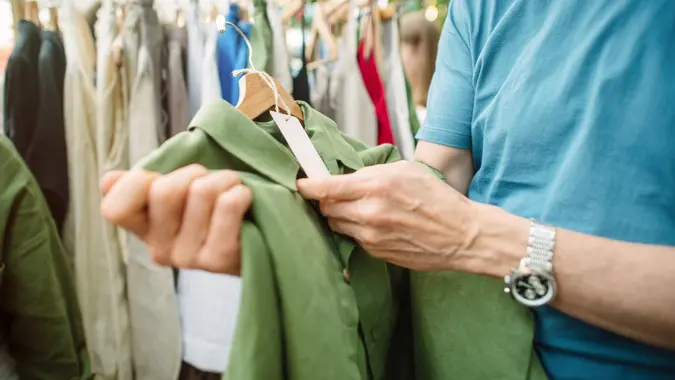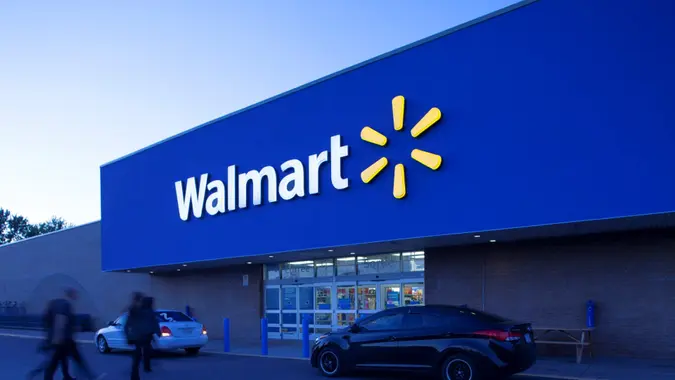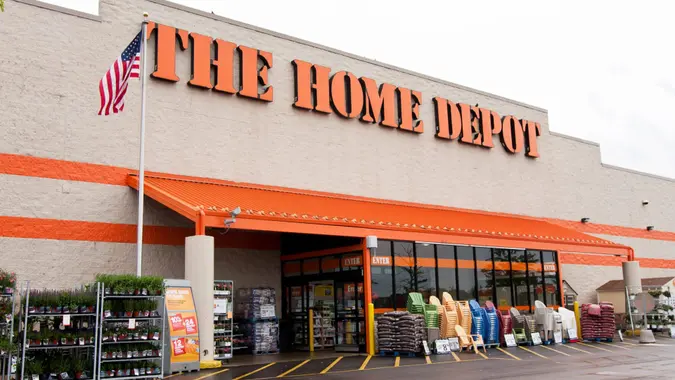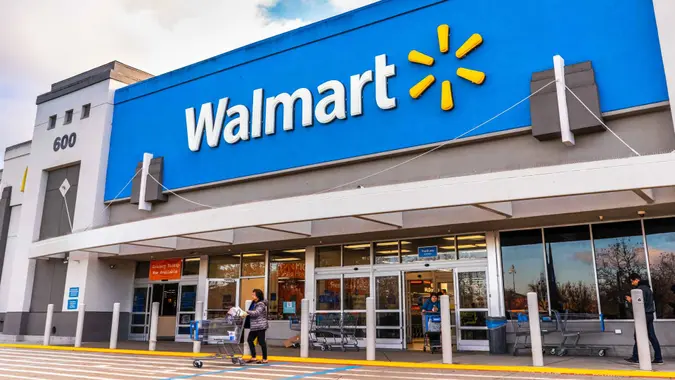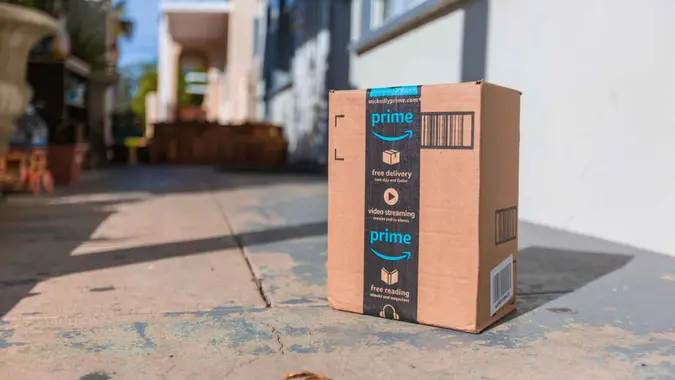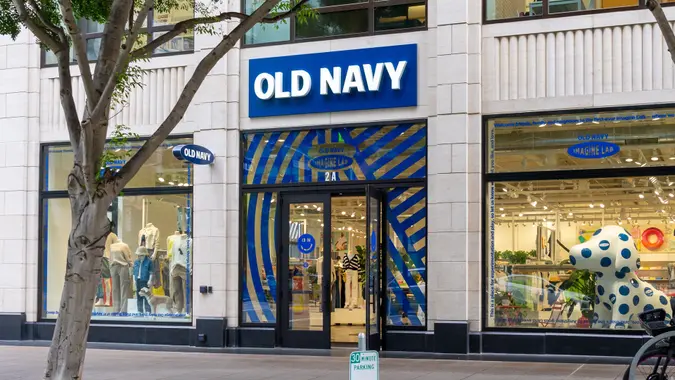Why Do We Get So Excited To Receive Packages? How That Feeling Depletes Our Bank Accounts

Commitment to Our Readers
GOBankingRates' editorial team is committed to bringing you unbiased reviews and information. We use data-driven methodologies to evaluate financial products and services - our reviews and ratings are not influenced by advertisers. You can read more about our editorial guidelines and our products and services review methodology.

20 Years
Helping You Live Richer

Reviewed
by Experts

Trusted by
Millions of Readers
The anticipation of receiving a package has become a common thrill for many. Receiving and then opening a new package is satisfying.
However, this seemingly innocent joy is not without its pitfalls, as it can significantly impact your financial well-being. Here are some of the reasons behind your package-induced happiness and how it can lead to a lighter wallet.
The Thrill of Anticipation
The excitement of receiving packages can largely be attributed to the psychological phenomenon of anticipation. When we order something online, we start a cycle of anticipation that releases dopamine, a neurotransmitter associated with pleasure and reward, in our brains.
This process is like the anticipation of other rewarding experiences, such as eating our favorite food or going on vacation. The waiting period creates a build-up of excitement, making the arrival of the package feel like a rewarding conclusion to a period of suspense.
Furthermore, receiving a package often represents more than just the acquisition of a new item. Getting a shiny, new package is like receiving a gift for yourself. This element of self-gifting taps into our desire for self-care and pampering, making each delivery a small celebration during the monotony of daily life.
The Social Dynamics of Shopping
Social media and peer influence play a significant role in fueling our excitement for packages. Platforms filled with unboxing videos, hauls, and glowing reviews create a sense of community and shared excitement around new purchases.
Seeing others share their joy and discoveries can incite a fear of missing out (FOMO), compelling us to make purchases to be part of the trend or conversation. This social validation reassures us that our spending is justified, further deepening the cycle of buying and receiving.
The Financial Implications
While the joy of receiving a package is undeniable, it can have a tangible impact on our financial health. The ease of online shopping and the emotional high of anticipating a delivery can lead to impulsive buying decisions. These decisions are often not aligned with your financial goals or budget, leading to unnecessary spending.
The constant influx of packages can slowly drain your bank account, as each small purchase adds up over time. The immediate gratification of receiving a package can overshadow the long-term financial repercussions, such as decreased savings, increased credit card debt, and the stress associated with financial instability.
While exhilarating, the cycle of purchase and anticipation can reduce your ability to make prudent financial decisions. This could push you toward a more consumerist lifestyle at the expense of your financial well-being.
Navigating the Excitement Wisely
Finding a balance between enjoying the thrill of receiving packages and maintaining financial health is essential. Setting budgets, differentiating between needs and wants, and delaying gratification can help mitigate the financial impact of your online shopping habits. By being mindful of the triggers and social pressures that drive your desire for packages, you can enjoy the excitement of new arrivals without compromising your financial stability.
Bottom Line
The excitement of receiving packages taps into deep-seated emotional and social dynamics, temporarily boosting happiness. However, recognizing the potential for this excitement to deplete your bank account is vital. By adopting mindful shopping practices, you can preserve the joy of receiving packages without letting it undermine your financial stability.
Editor's note: This article was produced via automated technology and then fine-tuned and verified for accuracy by a member of GOBankingRates' editorial team.
 Written by
Written by 



